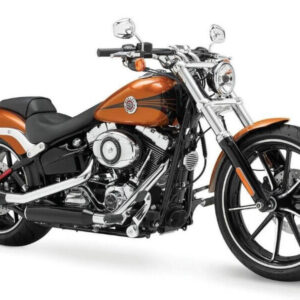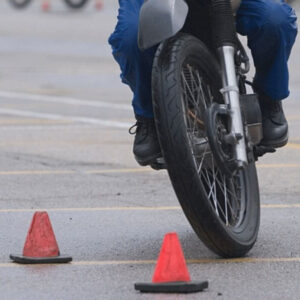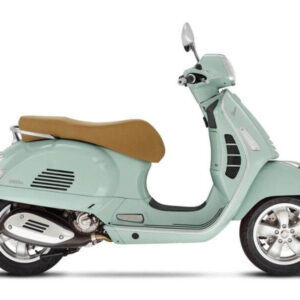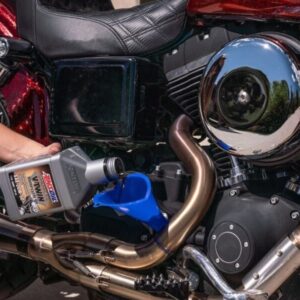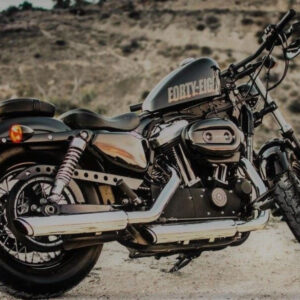When to replace motorcycle tires? The tires on your motorcycle are the only link between you and the road. Correct and regular maintenance of tires is essential. But do you know when they need changing? Read on to discover how often you need to replace your motorcycle tires.
Tires vary in durability, composition, and lifespan. These variations mean you should regularly look for signs of wear to realize when they need replacing.
When to replace motorcycle tires?
Many people don’t know that motorcycle tires aren’t designed to last as long as car tires. For tires with 5 years of use, manufacturers typically call for an annual inspection by a professional. For a tire that is 10 years old, even if the tread looks great, the manufacturers claim that the tire is at the end of it’s useful life and should be replaced.

Worn out tires
Tires that are worn out over time can significantly reduce grip in both dry and wet conditions and will greatly reduce the amount of control a rider may have for accelerating, braking, and cornering. Tire wear can be broken down into three main classifications: general tire wear, squared-off tires, and tire cupping or scalloping.
General tire wear
One of the most common conditions of tire wear is when a tire is used over time such that the tire grooves are almost at the same level as the rest of the tire contact patch. This can be easily measured by locating your tire’s tread wear indicator on the grooves.
If your tire’s outer surface is near or at the same level as your tread wear indicator, it’s time to swap out those tires. If in case you cannot locate your tread wear indicator, the depth of the groove must not be less than about 1mm when measured against the outer surface.
Squared-off tires
A squared-off tire can be easily identified by inspecting the tread wear of your tire, which is typically found on motorcycles that run a lot of highway miles. If the center portion of your tire is flatter than the sides of your tire, you’ve got yourself a squared-off tire.
Running a squared-off tire can be dangerous because of unpredictable grip when going through corners and will pose a big safety risk. If you’ve got a squared-off tire, it will be best to replace your set as soon as possible.
Cupped or scalloped tires
In contrast to squared-off tires, cupped or scalloped tires present uneven tread wear between the left and right portions of the tire. If the left portion of your tire seems to be more worn out than the right portion of the tire, or vice versa, you’ve got a cupped or scalloped tire.
This kind of tread pattern will also provide very unpredictable and unsafe riding conditions through straight lines and corners, and is also a symptom of a faulty suspension setup. If you’ve found this kind of tire wear on your motorcycle, find time to replace your tires and have your suspension inspected and repaired when possible.
Expired tires
Your tire’s manufacture date can be found on the sidewall, typically indicated by a 4-digit number that specifies the week and year of your tire’s manufacture date. 5 years is the typical lifespan of a tire, and tires that exceed the age of 5 years should not be used anymore.
This is because oils and other compounds found in the tire’s compound can evaporate and deteriorate over time. Even if your tire looks fresh, it will be best to find a newer set of rubber for your motorcycle if it is approaching or has exceeded the 5-year limit.
Damaged tires
Riding out a damaged tire can be one of the more dangerous things a rider can do since this can lead to catastrophic failure on the road. Tire damage typically presents itself in the form of small or large cracks on the tread or sidewall, rubber peeling away on the sidewall, or other forms of damage that can’t be repaired by a simple vulcanizing job.
If you’ve got any of these symptoms on your tire, do yourself a favor and replace these tires immediately. Do not attempt to ride on damaged tires since the tire can deteriorate quickly and spontaneously on the road.
Visual signs that your tires are dying
Checking the health of your tires is one of the simplest practices of motorcycle maintenance. Using just your eyes, you can inspect for low tread, crazing, bulges, flat spots, scalloping, aging and punctures. Below, we’ll show you how to identify and judge each of these issues.

How to spot low tread
The motorcycle minimum tread depth is roughly the same as it is for cars – 1.5mm. So, the classic automotive penny test is a good benchmark for riders as well.
And yes, Canada did discontinue the penny. But before you launch an angry riot on parliament hill, try grabbing a dime. Flip the Bluenose upside down and stick it into one of the tread grooves. If you can see the top of the mast, it’s time to replace the tire.
No change? No problem. Many motorcycle tires come with tread wear indicator bars (TWIs). These are little bands of raised rubber that run inside your tire’s grooves. When the indicator bars become flush with the surface of your tire, it’s time to get a new one.
Keeping an eye on tire crazing patterns
Crazing refers to the small cracks, cuts and tracks that appear on a tire’s surface as it ages. While these normally appear on a tire’s sidewall – near the rim – it’s worth having a look all over. Crazing is often caused by dry rot, which is especially common for those who can’t ride during the winter. If you live in Canada, that probably means you.
Crazing is a telltale sign of slow leaks and an imminent blowout. If you notice some cracking, don’t hesitate to replace the tire.
Tire bulges mean big trouble
If it looks like your tire is blowing a bubble, change it. Now!
This indicates severe damage to the tire’s outer surface. As a portion of the tire is weakened, the internal air pressure causes it to bulge outwards. The bubbling portion of the tire can be extremely fragile, so it’s not recommended to drive your motorcycle to the shop. Change the tire yourself, find a trailer for your bike, or detach the wheel and bring it in separately.
When chicken strips become dangerous
We all have certain riding habits, and they can be read from our tires’ wear pattern. If you ride slowly and more upright, you’ll get what’s called a “chicken strip” along the center of your tire. This is basically an unkind way of saying that the center of your tire has been worn flat, while the edges haven’t seen much action.
Keep an eye out for this, as flat spots suggest that a tire is nearing the end of its life. When you can feel the chicken strip while riding – or when it wears your tread below the minimum depth – time is up.
If you don’t ride like a chicken, you’re equally likely to develop flat spots. That’s because aggressive riders are creatures of habit – they tend to repeat the same lean angles in most turns. Speedier motorcyclists should look for two flattened rings on either edge of their tire. Just like chicken strips, edge flattening is a warning signal.
Another type of flat spot comes from leaving a motorcycle stationary for an extended period of time. If your bike isn’t on stands during the winter, then your tires will become flattened in the areas where they contact the ground. Again, these flat spots indicate that it’s time to invest in a new set.
How to check the age of your motorcycle tire?
Treadwear, though, is not the only reason to replace motorcycle tires. As with most consumables, tires have a shelf life.

Motorcycle tire manufacturers advise that even if a tire has lots of remaining treads, the drying out of the tire’s multiple rubber compounds means it will need replacing every 5-6 years.
You can find this information as a 4 digit date code located on the sidewall of the tire. The first numbers are the week of the year followed by the last 2 numbers which are the year itself. For an example, 0420 means the 4th week of 2020.
Drying out may not be immediately clear, but it can lead to cracks in the sidewall and a deterioration of the tread. Even with remaining treads, these old tires can become brittle and could fail catastrophically in the right conditions.
If you aren’t sure of the age of your tires, a quick inspection of the sidewall will reveal the month and year of its manufacture.
FAQs
How often should I replace motorcycle tires?
As with most consumables, tires have a shelf life. Motorcycle tire manufacturers advise that even if a tire has lots of remaining treads, the drying out of the tire’s multiple rubber compounds means it will need replacing every 5-6 years.
Do motorcycle tires wear out faster?
A smaller contact patch, more pressure, softer compounds, and versatile maneuverability causes motorcycle tires to wear out faster than car tires. However, you can make them last longer with proper maintenance, using good-quality tires, and riding sensibly.
Why do motorcycle tires not last long?
That’s because rubber, like many other materials, experiences the natural chemical process called oxidation. As your tires oxidize, they become harder and more brittle, which reduces their traction and other performance factors.
Above is information about When to replace motorcycle tires? that we have compiled. Hopefully, through the above content, you have a more detailed understanding of How to check the age of your motorcycle tire? Thank you for reading our post.

